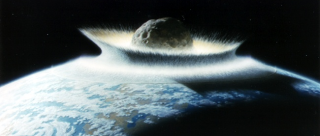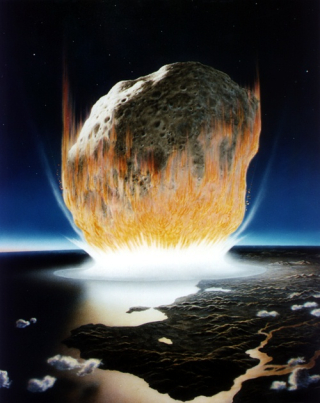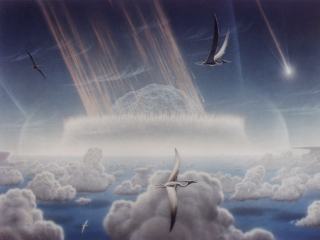

Sixty-six million years ago, about half of all life on earth suddenly disappeared. This mass extinction was probably caused by a meteorite that hit the Earth off the coast of Mexico and created a chain of events that led to the demise of non-bird dinosaurs. This particular meteorite was large (about the size of the island of Montreal) and is estimated to have been travelling at speeds of more than 100 km/second. As the meteorite raced through the Earth’s atmosphere and then punctured the crust it generated enormous amounts of radiation, heat, and fusion. As a result, upon striking the planet, the meteorite caused massive fires to erupt. The force of the meteorite’s impact with Earth was so great that it created large earthquakes and mega tsunamis. These powerful quakes created shock waves throughout the Earth, causing many dormant volcanoes around the world to become active once again. Mass volcanic activity further contributed to the amount of pollution and toxic gases in the air.

Millions of tonnes of debris were ejected into the atmosphere and dimmed the sun. As a result photosynthesis ceased to operate in many plants. So, there was not enough food for large herbivorous dinosaurs, such as Triceratops, to survive. This caused a food shortage for omnivorous and carnivorous dinosaurs such as Tyrannosaurus rex. However, not all plant and animal life died during this period of destruction. A few smaller mammals were able to survive and later evolved into the many species that we have today.
The K-Pg Boundary is the layer of rock preserved where the meteorite impact occurred. It lies between the Cretaceous and the Paleogene (post-Cretaceous) layers of rock strata. The End Cretaceous impact theory is supported with physical geological evidence such as the massive Chicxulub crater off the coast of Mexico’s Yucatán Peninsula and features of the K-Pg boundary layer. For example, there are high levels of shocked quartz at the K-Pg layer suggesting a heavy-hitting impact force; there are high levels of iridium in this layer pointing to an extra-terrestrial source, and the unusual levels of chemicals, pollution, and dead plant and animal debris within the layer indicate destructive forces caused enormous changes in the environment.
